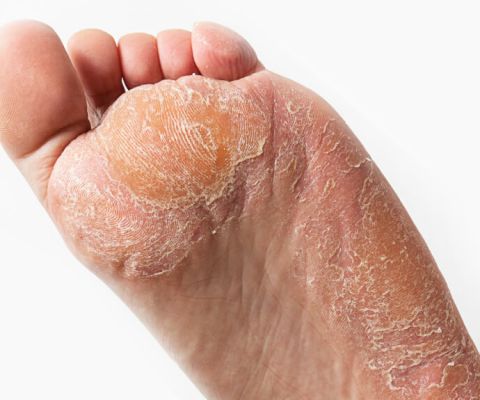Running Injuries: When Is It Safe To Go Back To Running?
 Running Injuries: When Is It Safe To Go Back To Running? www.walkjogrun.net
Running Injuries: When Is It Safe To Go Back To Running? www.walkjogrun.net Unless you are among the luckiest of the runners, it is likely that eventually, you will find yourself sidelined with injury. There are many important things to ask yourself if you do end up injured. For example, how do you know if you can run through pain or not? Is there a good rule of thumb to follow regarding how long you should rest when hurt? Are there typical running injuries that you can do things to avoid?
Excellent questions! Lucky for our readers, we have answers to your questions!
What Is The Most Common Runner Overuse Injury?
Known in the medical community as patellofemoral pain, runner’s knee is perhaps the most common running injury. The runner will feel pain around or behind the kneecap. Although it is most common in runners, you also see this injury in cyclists and avid hikers.
Since runner’s knee is an overuse injury, it is often brought about by doing too much too soon, or by increasing mileage too quickly. Typically you can handle this injury simply by resting for a few days and then returning to activity at lower mileage than you were trying to do prior.
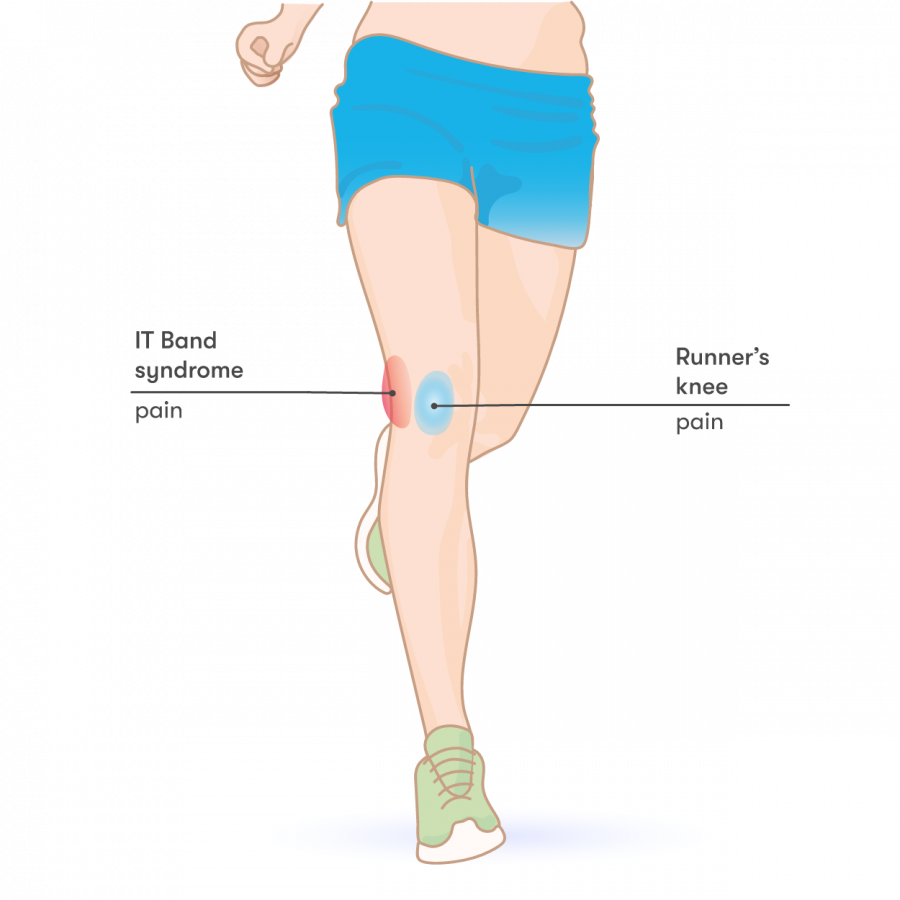
ITBS, otherwise known as IB band syndrome or Iliotibial band syndrome, is another common runner’s injury. With this, you will feel pain either to the side of the knee or just a bit above it. This type of injury is actually quite slow to heal.
Many runners find they can alleviate the pain with pressure right where the pain is located. This can be done with pre-wrap, or a velcro strap made especially for the IT band. IT band pain can also be treated by rest, ice and by doing specific stretches.
Shin splints often plague runners. Some runners commonly feel shin pain when the shoes they are running in are starting to break down. I am one of those people! Just last week I found myself with very sore shins after a 5-mile tempo run. When I checked the mileage on the pair of trainers I had been running in, I found they had about 330 miles in them. As someone who knows that my shoes typically last me about 300 miles, I knew it was time to retire those shoes!
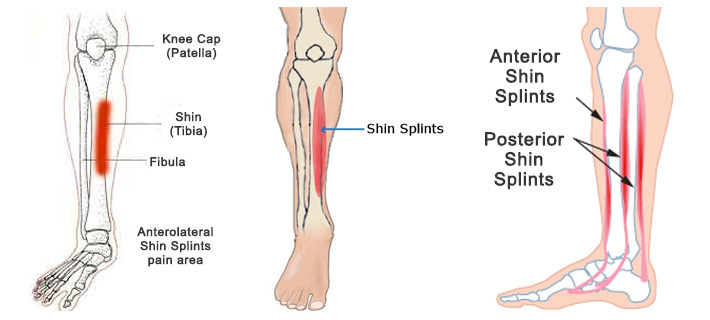
Shin splints can be taken care of easily and quickly if you catch it early on and remedy the problem. However, if you let things go too far, you can find yourself struggling with shin pain for a long time.

Plantar fasciitis, or PF, is caused by inflammation of the plantar fascia. Another overuse injury, many runners struggle with PF off and on throughout their entire running career. If you suffer from plantar fasciitis, you may find choosing your shoes carefully can help you avoid a flareup.
Can You Run Through an Injury?
This is a difficult question to answer. First, there are many types of discomfort you can run through. The problem is being able to differentiate between general discomfort that it is safe to run through and actual pain caused by injury.
One thing to consider when you feel a twinge is slowing down. If you slow down, does the discomfort end? If it does, consider going at that easier pace a bit.
Another thought is to stop and stretch. This is especially true if you neglected to warm up properly. I know that if I don’t stretch properly and I start out too fast, my hamstring is going to act up. When this happens, I slow myself down. I might also stop and do some dynamic stretching to loosen up the hammy. This often helps the twinge to quiet itself.
Some runners find it helpful to switch up their running surface if they are getting discomfort. If you commonly run on hard surfaces like asphalt or concrete, find a track or nice grassy area on which to run. You could also move to hard-packed dirt trails if you have them available to you.
If these tactics don’t work or if the pain gets worse, you may be best off to stop running and walk home. If walking quiets the injury, try brisk walking. Does the discomfort go away and stay gone? Maybe just resting for that day will do the trick. If walking hurts, you probably need to take a few days off of running.
Should I Run Through Pain?
Some pain is pain you can expect to experience and run through. For example, if you are racing, I mean truly racing, you can expect it to hurt. The burn in your lungs and stitch in your side that comes with putting forth 100% effort in your run is not only expected, it is a mark of a champion. But remember, this is temporary pain that you learn to lean into rather than shying away from.
This is different than a sharp and unexpected pain in a muscle that normally doesn’t experience pain. That is something you may need to worry about.
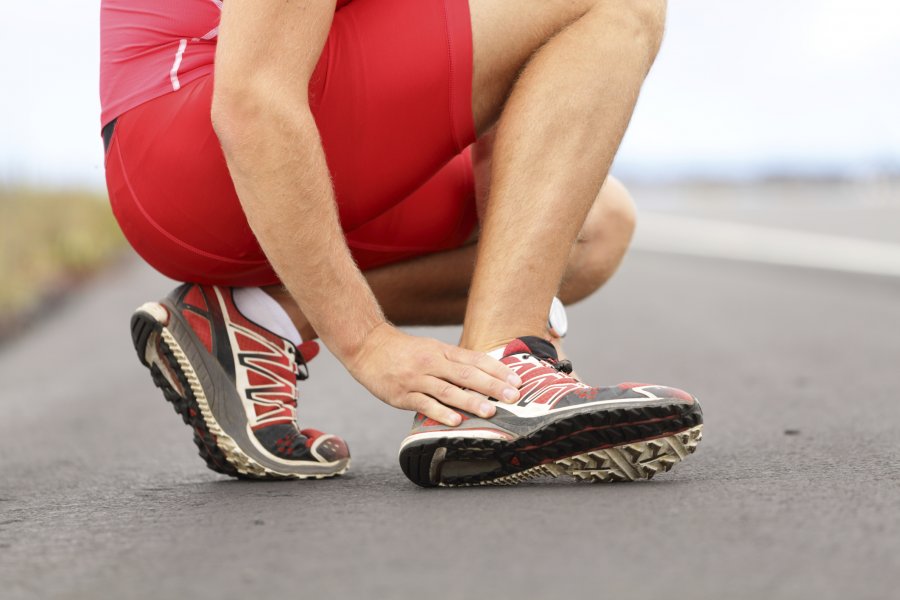
You should also differentiate between a little twinge that may go away once you have adequately warmed up. In addition, you need to know what general muscle soreness feels like. If you have had a very strenuous weight lifting or HIIT session, you may find yourself very sore the next day. It is expected that things might be a little painful on your next run.
If you start out slow and easy, this general soreness will subside as you move forward. This is a good “working the kinks out” pain, not something to worry about.
How Long Should You Rest a Running Injury?
When coming back from a running injury, the rules on how long to rest are not set in stone. If you go home and do the normal RICE (rest, ice, compression and elevation) and feel better the next day, you may choose to head out for a couple of super easy miles. Does that go well? Then maybe you will do that same thing a couple more times before attempting something more vigorous.
After that run I spoke about where my shins were acting up? I took a day off then laced up on the second day to head out for a run. Prepared with brand new shoes, which typically solve my shin pain if I am paying attention to my body, about a mile into easy running I decided to pick up the pace. Guess what? No pain! And this was after minimal rest.
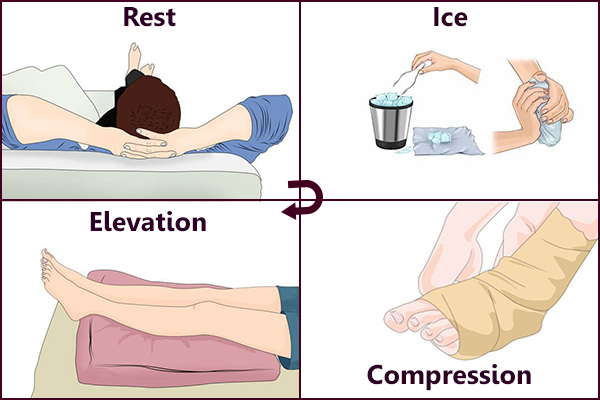
Runner’s knee, if allowed to go unchecked for a while, can take anywhere from 4-6 weeks to heal. I have a friend who had to take a 9-week hiatus from running when struggling through plantar fasciitis.
When I fell and broke my elbow, I was back running two weeks later. Another pal switched to elliptical when heeling through a broken elbow and needed to do that for almost a month because the jarring was more pain than she could bear.
A twisted ankle could take a week, or three weeks, or six.
The point is, no two runners and their injuries require exactly the same amount of time. If you are truly hoping to get back to your A-game after an injury, my advice is to seek the advice of either a physician, physical therapist or licensed athletic trainer who specializes in sports and athletes. These specialists can help you make educated decisions about your return to activity.
It is also likely that they can help you find activities you can do to keep yourself sane while you are not running.
I am not telling you that if your doctor gives you advice you don’t like, you should just keep looking until you find someone who does. However, if whoever is advising you does not seem as determined to get you back to the action as you are, you should find someone who is hearing your concerns and understands your passion for movement.














